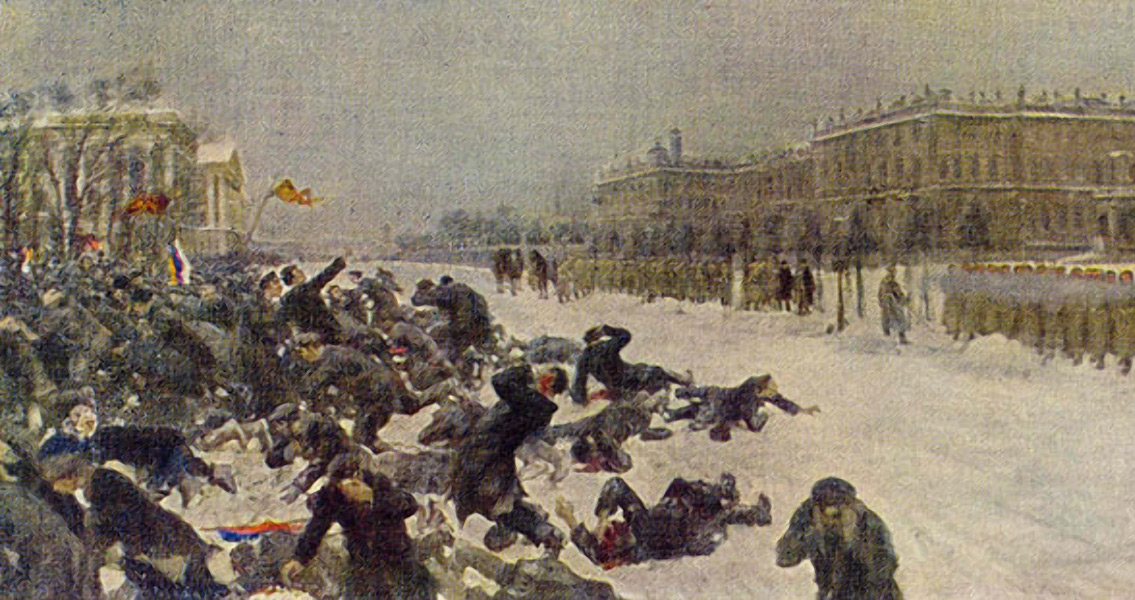<![CDATA[1905 bore witness to some of the most widespread disorder in the Russian Empire. Waves of mass political and social unrest swept across vast areas of the Empire in what has come to be called the Revolution of 1905. Workers went on strike, peasants seized land and tools, and military units mutinied. Some of these events were directed specifically against the government, while others were simply spontaneous uprisings. Following the Revolution, Tsar Nicholas II clung to power by reforming his regime. The October Manifesto, followed by the Constitution of 1906, guaranteed civil liberties to all citizens, tied the monarchy to a limited constitution for the first time, and set up a multiparty system. These reforms, however, were not enough to fully quell the rising tide of revolution which would eventually topple the Tsarist regime in 1917. New research has looked at the 1905 Revolution, particularly the consequences it had for the Jewish population of the city of Warsaw. Karen Auerbach, Assistant Professor of History at the University of North Carolina, has reviewed recent scholarship about how a modern Jewish politics grew out of the 1905 Revolution. As Warsaw grew during a period of rapid urbanisation at the turn of the twentieth century, the traditional bonds of Jewish communities were broken down. This breakdown of established communities paved the way for new modes of developing Jewish identity. "The development of modern Jewish politics is rooted in a 'search for order and meaning' that responds to the chaos of life in a metropolis and attempts to fill the void left by the deterioration of traditional authority and collective identities," Auerbach explains in her work, published in the most recent edition of the journal, Jewish History. In the aftermath of the Revolution, new secular Jewish spaces began to emerge after the liberalisation policies of Tsar Nicholas II had slackened restrictions on the press and public gatherings. This new Jewish public sphere – comprised of the Yiddish press, coffeehouses and theatres – created an ‘ethno-linguistic’ community amongst Warsaw’s Jews, providing new collective bonds for the community. This new Jewish community provided a sense of order for new migrants to Warsaw, a place which could be very worrying. “The disorder, confusion, and possible dangers of urban life—from unfamiliar streetscapes to charlatans who preyed on those who were vulnerable—disoriented newcomers and other city residents, particularly women and children,” Auerbach notes. It is clear that scholarship has taken a clear shift in how Warsaw’s Jewish community is examined. The modern Jewish politics which arose in early-twentieth-century Warsaw was a reaction to a crisis of modernity and urbanisation. Jewish politics did not grow out of internal Jewish developments; they were a response to outside factors. “By shifting the focus away from ideologues, elite decision makers, and cultural figures and toward the broader public,” Auerbach notes, “[new research] complements and challenges the foundational historiography of modern Jewish politics in eastern Europe.” New cultural institutions expanded the Jewish public sphere and were instrumental in bringing Jews into political modernity. Coffeeshops, the press and theatres provided secular arenas where ideas could be shared and debated and Jews could form new bonds. “These spaces curbed the sense of isolation experienced by newcomers,” Auerbach concludes. For more information: www.link.springer.com Image courtesy of Wikimedia Commons user: Alex Bakharev ]]>
The Jewish Context of the 1905 Revolution
